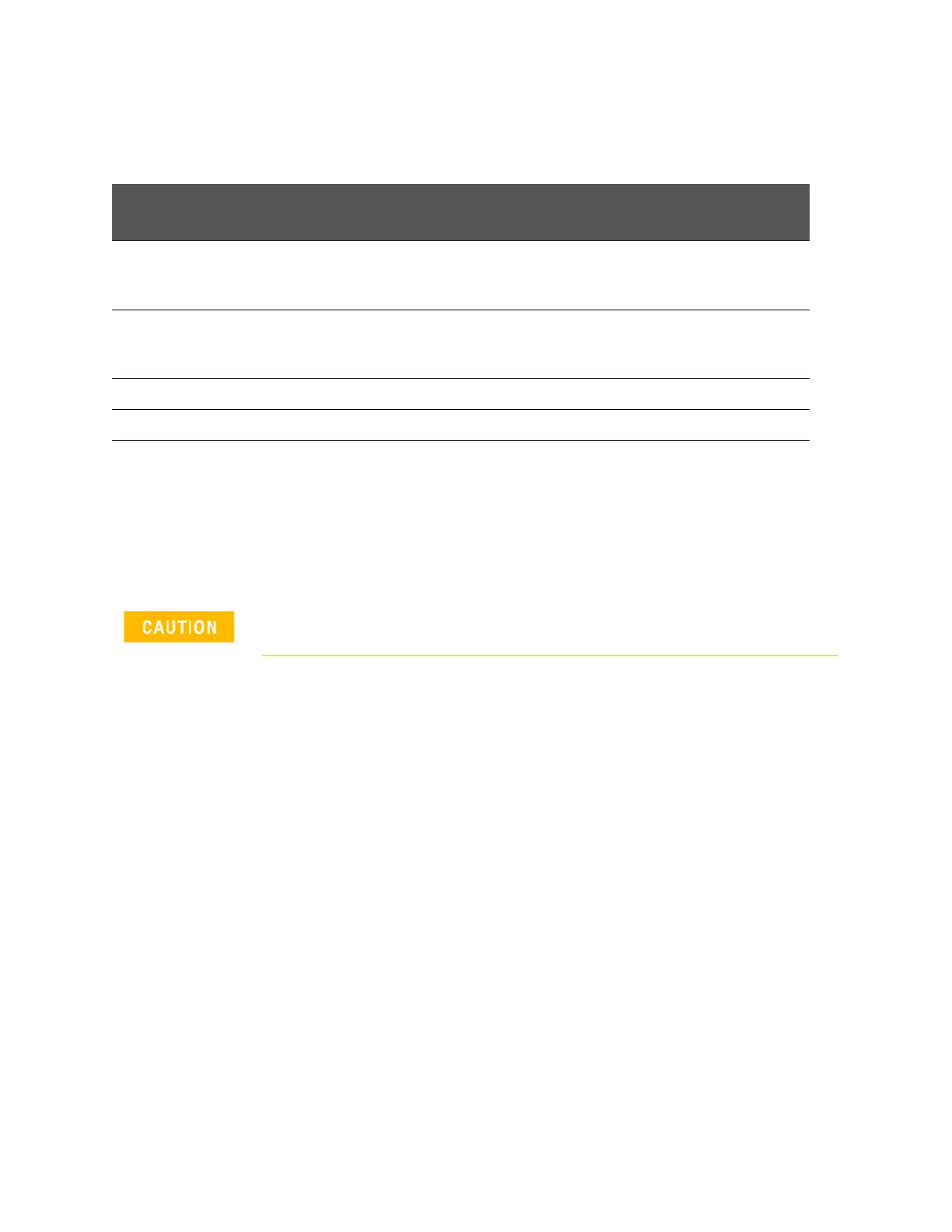Electronic Calibration Modules Reference Guide 4-21
Use, Maintenance, and Care of the Devices
Making Connections
Separating Connections
To avoid lateral (bending) force on the connector mating plane surfaces,
always support the devices and connections.
1. Use an open-end wrench or spanner wrench to prevent the device body
from turning.
2. Use another open-end wrench or the torque wrench to loosen the
connector nut.
3. Complete the separation by hand, turning only the connector nut.
4. Pull the connectors straight apart without twisting, rocking, or bending.
Table 4-1 ECal Module Torque Wrench Information
Connector Type Torque Wrench
Part Number
Wrench
Opening
Torque Setting
Torque Tolerance
a
3.5 mm, 2.92 mm,
2.4 mm, 1.85 mm
(test port)
8710-1764 20 mm 90 N-cm (8 in-lb) ±9 N-cm (±0.8 in-lb)
3.5 mm, 2.92 mm,
2.4 mm, 1.85 mm
(adapters)
8710-1765 5/16 in 90 N-cm (8 in-lb) ±9 N-cm (±0.8 in-lb)
Type-N 50 Ω 8710-1766 3/4 in 135 N-cm (12 in-lb) ±13.5 N-cm (±1.2 in-lb)
7 mm 8710-1766 3/4 in 135 N-cm (12 in-lb) ±13.5 N-cm (±1.2 in-lb)
a. Many older Keysight calibration module manuals list different torque tolerances for the various torque wrenches. The
correct torque tolerance for Keysight torque wrenches is ±10% of the torque setting as listed in this table.
Do not turn the device body. Only turn the connector nut. Damage to the
center conductor can occur if the device body is twisted.

